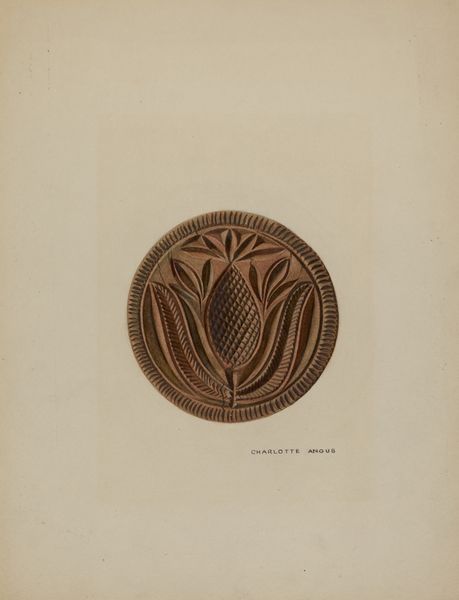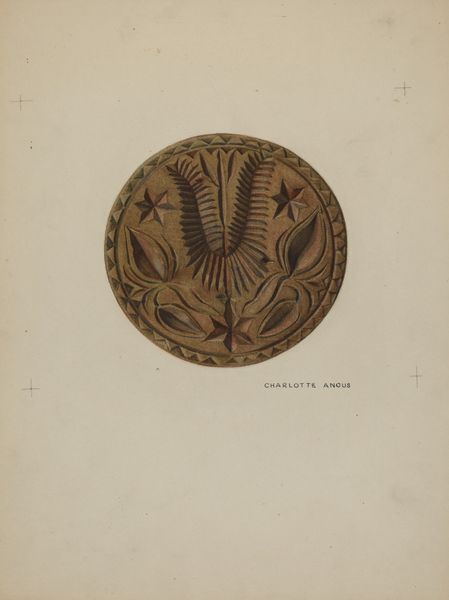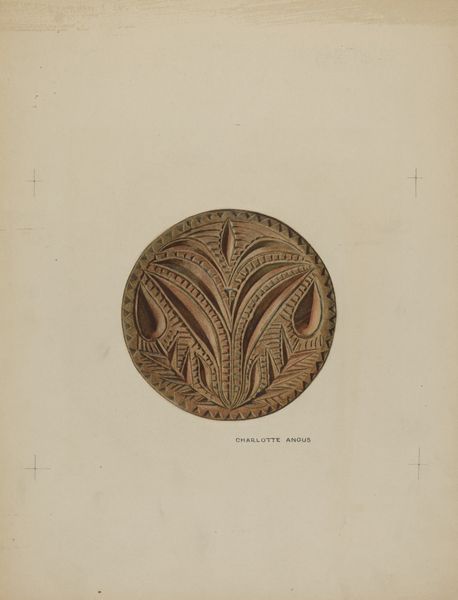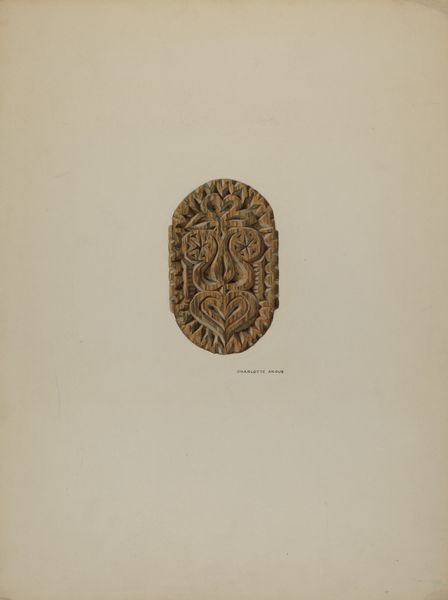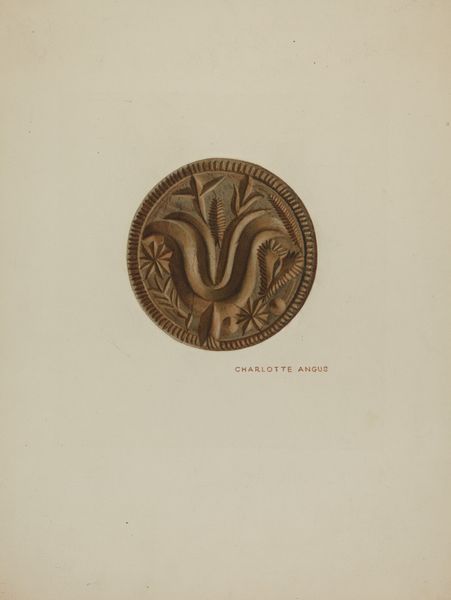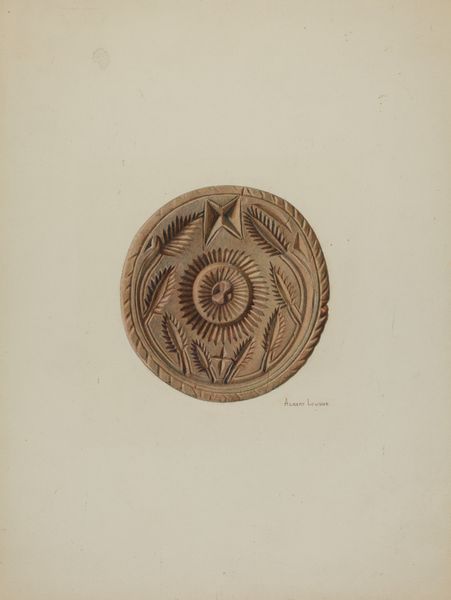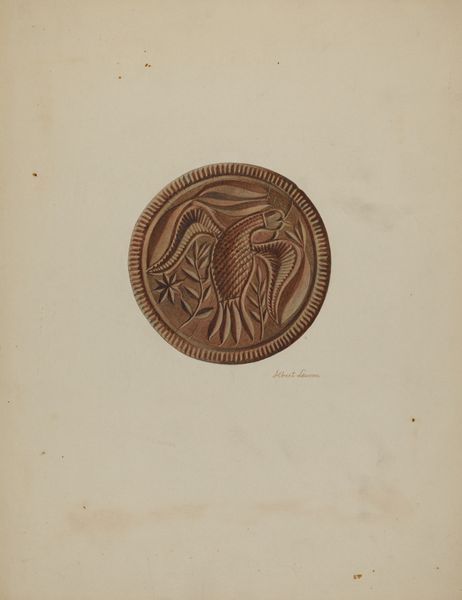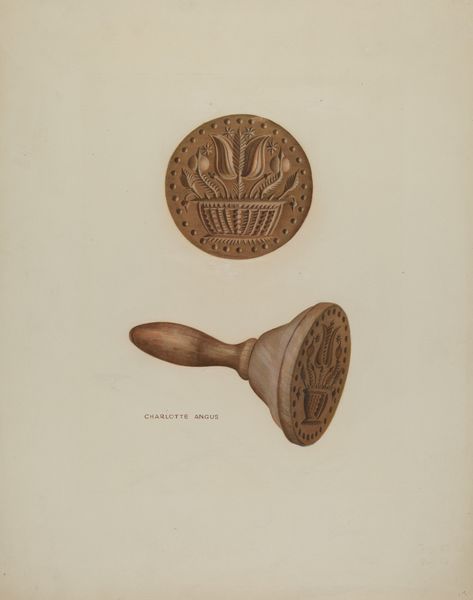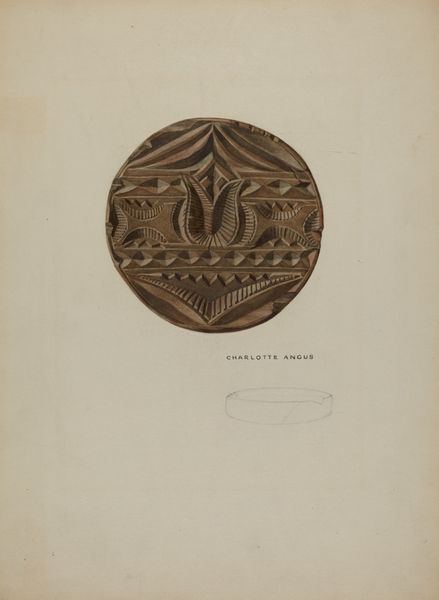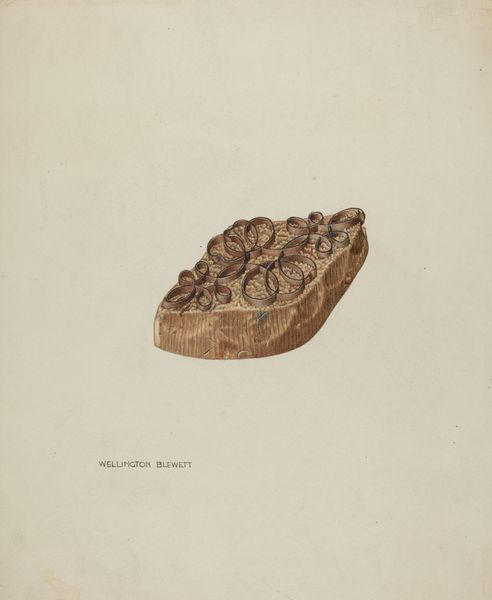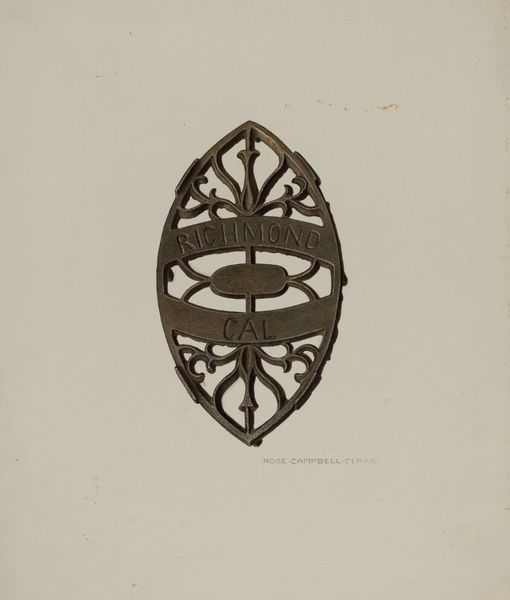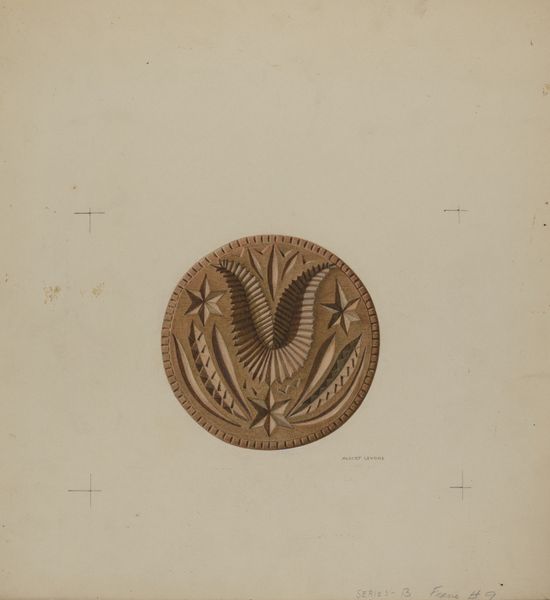
drawing, carving, wood
#
drawing
#
carving
#
light coloured
#
stoneware
#
folk-art
#
ceramic
#
wood
Dimensions: overall: 37.9 x 30.4 cm (14 15/16 x 11 15/16 in.) Original IAD Object: 4 1/2" high' 4 1/2" in diameter
Copyright: National Gallery of Art: CC0 1.0
Editor: Here we have a drawing of a Pennsylvania German Butter Mold, dating to about 1938. It looks like a drawing rendered in light colored stoneware and wood. The design is floral. What can you tell me about this particular mold, what do you make of it? Curator: This butter mold provides an interesting intersection of folk art and cultural identity. It prompts us to think about the labor involved in food preparation and how even mundane domestic objects can become carriers of cultural memory. The Pennsylvania German community was deeply rooted in agricultural practices, and butter-making was often a communal activity, traditionally passed down through generations of women. Editor: So, the design elements themselves--the floral motifs, for example—how might they be read within this context? Curator: Exactly. These floral motifs transcend simple decoration. They likely held symbolic meaning related to fertility, abundance, and the connection to the natural world so essential to rural life. This, of course, also needs to be analyzed from the perspective of power structures, as domestic activities historically relegated women. This mold elevates the mundane, providing aesthetic satisfaction through intricate carving, while still operating within certain gender roles. Do you think that it has changed or influenced views of women? Editor: It's amazing how one little object opens a whole world of social and cultural meaning. I’m wondering what impact this butter mold had on food presentation, and, maybe more importantly, on community structures in food creation and preparation. Curator: It reminds us of the artistic value and social connections woven into our everyday lives. Every pattern pressed into that butter was imbued with cultural meaning and expressed pride in cultural identity. Editor: Absolutely. It makes you think about the intersectionality of daily labor, gender and art. Thanks for the analysis, the way you described its social meaning gave me another approach when considering such artefacts.
Comments
No comments
Be the first to comment and join the conversation on the ultimate creative platform.
